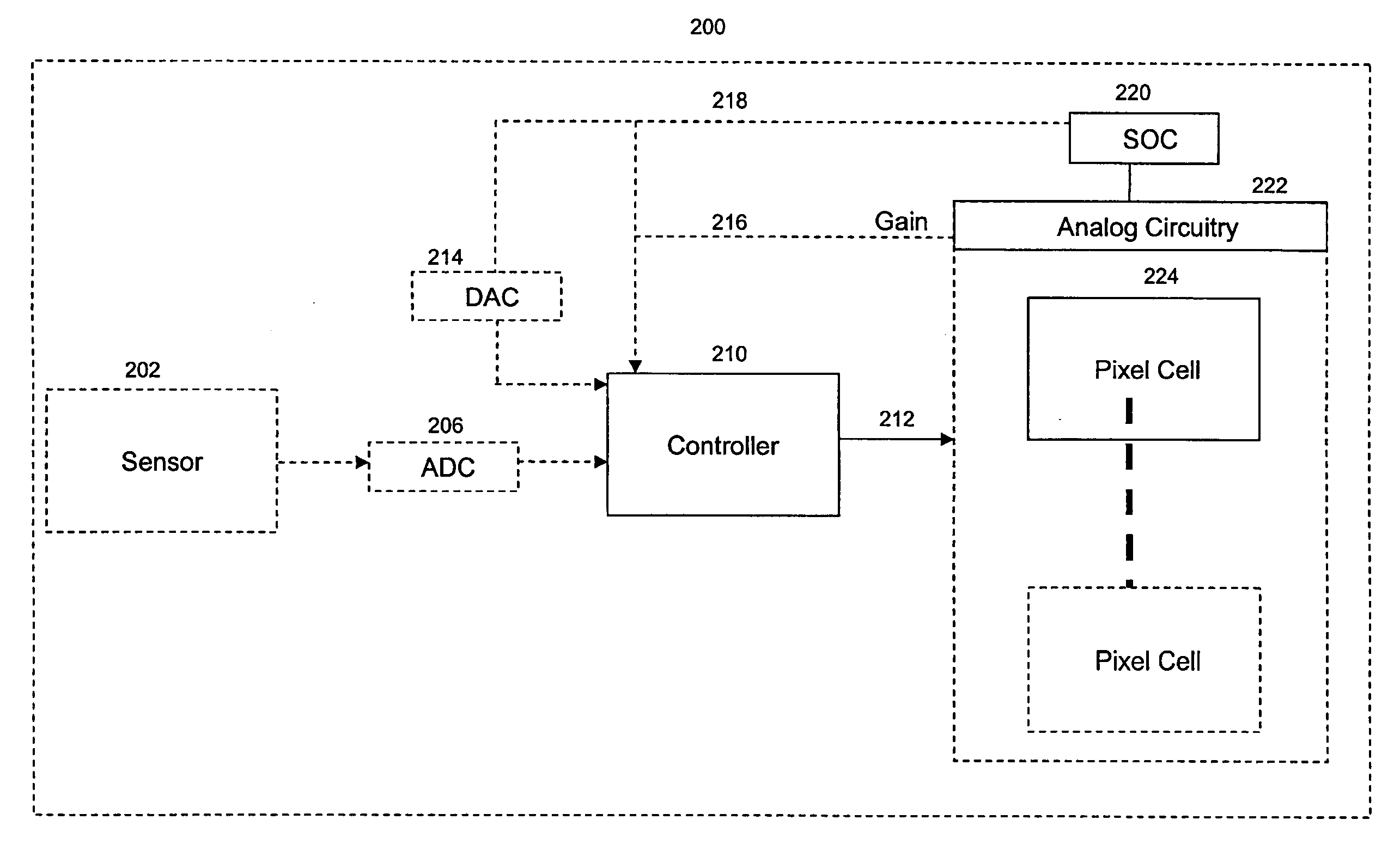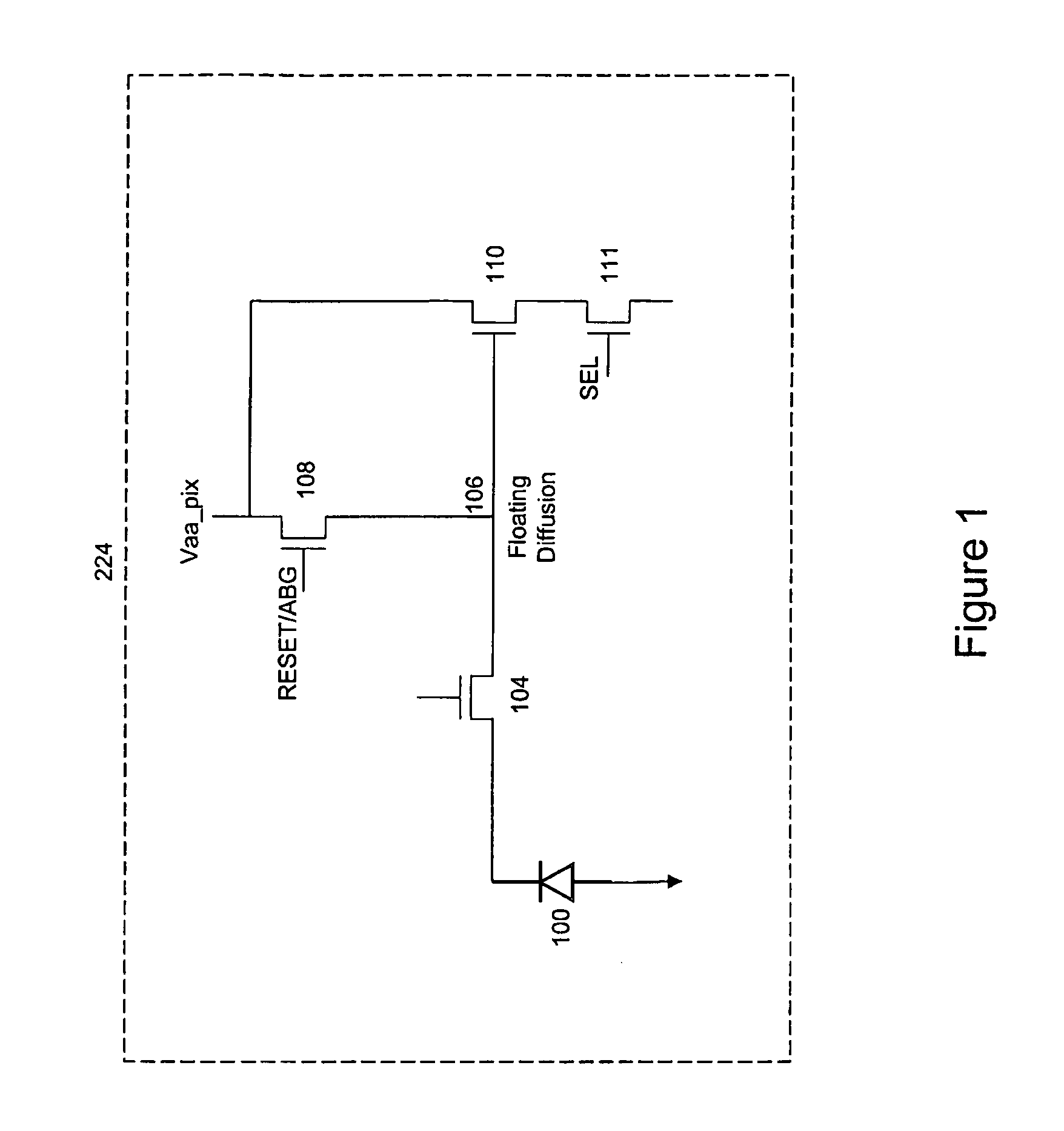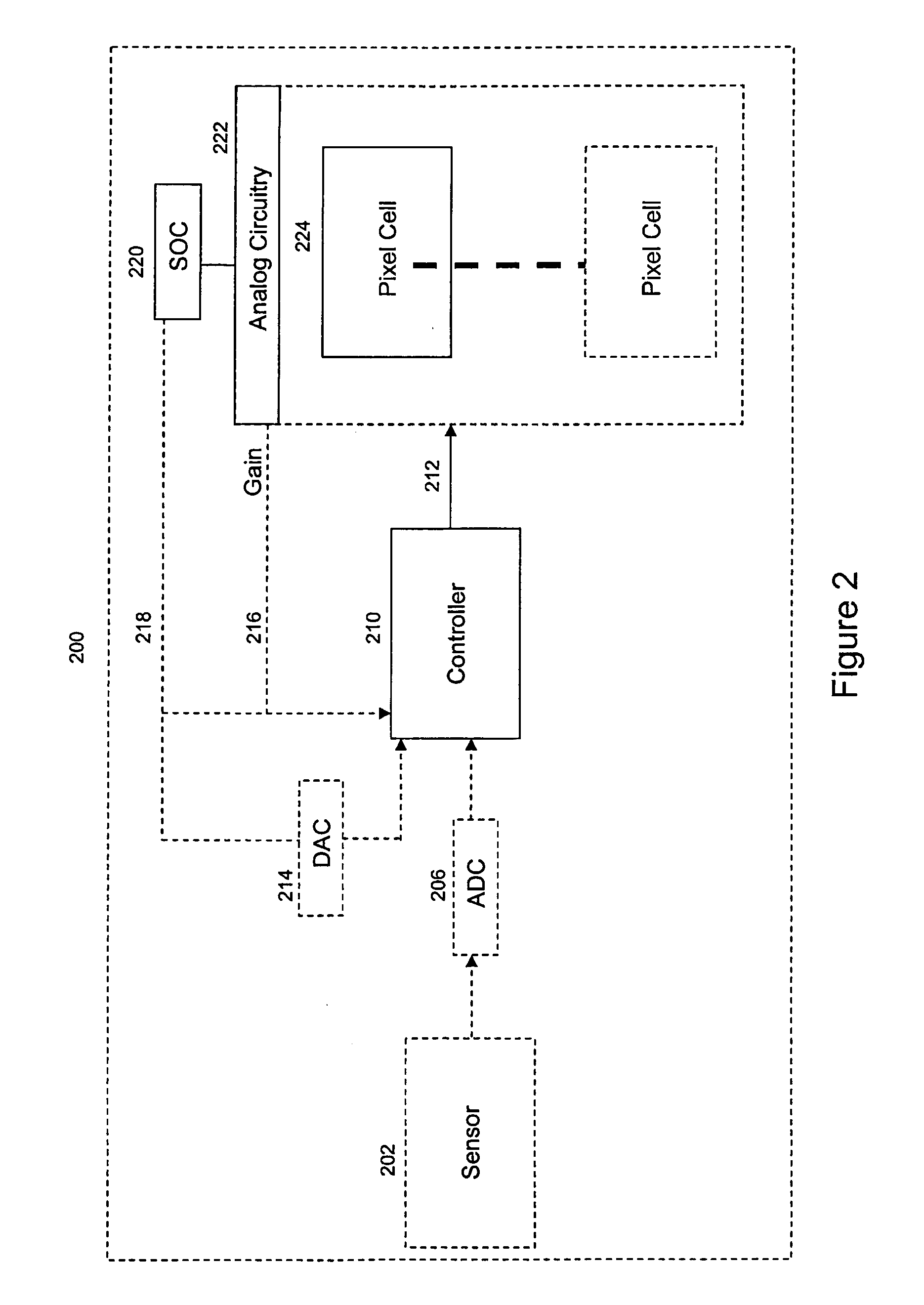Method and apparatus for controlling Anti-blooming timing to reduce effects of dark current
a technology of anti-blooming timing and dark current, which is applied in the direction of radio frequency controlled devices, instruments, television systems, etc., can solve the problems of blooming, dark current, and corrupted image capture ability of pixel cells,
- Summary
- Abstract
- Description
- Claims
- Application Information
AI Technical Summary
Problems solved by technology
Method used
Image
Examples
Embodiment Construction
[0014]An electronic imager typically includes an array of pixel cells for capturing an image. Each pixel cell includes a photo-sensor for photocurrent generation during an integration time when the electronic imager is capturing an image. During the integration time, the photo-sensor accumulates electric charge in response to impinging photons.
[0015]In one example, an electronic imager may consist of complimentary metal-oxide semiconductor (CMOS) active pixel sensor (APS) pixel cells. As described above, CMOS pixel cells typically consists of a photo-diode for photocurrent generation to generate an accumulated charge and a floating diffusion to store the charge accumulated by the photodiode. Although photo charges are generated as electron-hole pairs, it is the accumulation of the photoelectrons in the reverse-biased photodiode that produces the pixel values addressed here. In addition, a CMOS APS pixel may include a reset transistor for resetting accumulated charge produced by the ...
PUM
 Login to View More
Login to View More Abstract
Description
Claims
Application Information
 Login to View More
Login to View More - Generate Ideas
- Intellectual Property
- Life Sciences
- Materials
- Tech Scout
- Unparalleled Data Quality
- Higher Quality Content
- 60% Fewer Hallucinations
Browse by: Latest US Patents, China's latest patents, Technical Efficacy Thesaurus, Application Domain, Technology Topic, Popular Technical Reports.
© 2025 PatSnap. All rights reserved.Legal|Privacy policy|Modern Slavery Act Transparency Statement|Sitemap|About US| Contact US: help@patsnap.com



